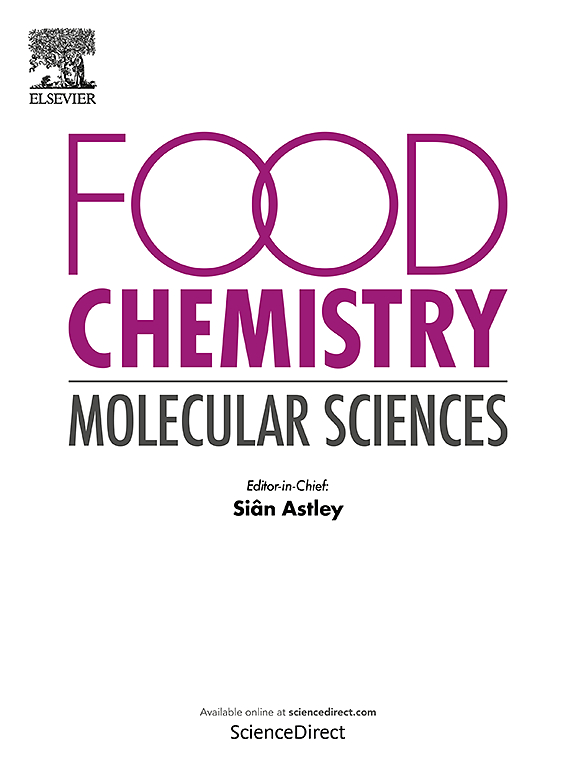Biaxially oriented polyethylene film preserves nutritional quality and extends the shelf life of postharvest peaches
IF 4.7
Q2 FOOD SCIENCE & TECHNOLOGY
引用次数: 0
Abstract
Biaxially oriented polyethylene (BOPE) is a high-strength, lightweight polyethylene material with superior barrier properties. In this study, peaches were packaged using either polyethylene (PE) or BOPE film. The peaches packaged in BOPE film maintained better firmness, color retention, antioxidant content, and nutritional quality than control peaches and those packaged in PE film. Transcriptome sequencing revealed 1041 differentially expressed genes in BOPE-packaged fruit compared with that in the control, and these were enriched in the pyruvate metabolism, flavonoid biosynthesis, and glutathione metabolism pathways. Physiological analyses demonstrated that BOPE packaging reduced malondialdehyde accumulation and increased peroxidase and phenylalanine ammonia-lyase activity, potentially limiting membrane peroxidation and senescence. BOPE-packaged fruit also retained higher levels of soluble sugars, reducing sugars, free amino acids, and proline, which are critical for fruit flavor and stress adaptation. Together, these results underscore the potential of BOPE as a novel packaging material for the preservation of fruits and vegetables.
双轴定向聚乙烯薄膜保留了桃子的营养品质,延长了采后的保质期
双轴定向聚乙烯(hope)是一种高强度、轻质的聚乙烯材料,具有优异的阻隔性能。在这项研究中,桃子用聚乙烯(PE)或hope薄膜包装。与对照桃和PE包装桃相比,PE包装桃的硬度、保色性、抗氧化剂含量和营养品质均有所提高。转录组测序显示,与对照相比,bope包装的果实中有1041个差异表达基因,这些基因富集于丙酮酸代谢、类黄酮生物合成和谷胱甘肽代谢途径。生理分析表明,hope包装减少了丙二醛的积累,增加了过氧化物酶和苯丙氨酸解氨酶的活性,潜在地限制了膜过氧化和衰老。使用hope包装的水果还保留了较高水平的可溶性糖、还原糖、游离氨基酸和脯氨酸,这些对水果风味和适应压力至关重要。总之,这些结果强调了hope作为一种保存水果和蔬菜的新型包装材料的潜力。
本文章由计算机程序翻译,如有差异,请以英文原文为准。
求助全文
约1分钟内获得全文
求助全文
来源期刊

Food Chemistry Molecular Sciences
Agricultural and Biological Sciences-Food Science
CiteScore
6.00
自引率
0.00%
发文量
83
审稿时长
82 days
期刊介绍:
Food Chemistry: Molecular Sciences is one of three companion journals to the highly respected Food Chemistry.
Food Chemistry: Molecular Sciences is an open access journal publishing research advancing the theory and practice of molecular sciences of foods.
The types of articles considered are original research articles, analytical methods, comprehensive reviews and commentaries.
Topics include:
Molecular sciences relating to major and minor components of food (nutrients and bioactives) and their physiological, sensory, flavour, and microbiological aspects; data must be sufficient to demonstrate relevance to foods and as consumed by humans
Changes in molecular composition or structure in foods occurring or induced during growth, distribution and processing (industrial or domestic) or as a result of human metabolism
Quality, safety, authenticity and traceability of foods and packaging materials
Valorisation of food waste arising from processing and exploitation of by-products
Molecular sciences of additives, contaminants including agro-chemicals, together with their metabolism, food fate and benefit: risk to human health
Novel analytical and computational (bioinformatics) methods related to foods as consumed, nutrients and bioactives, sensory, metabolic fate, and origins of foods. Articles must be concerned with new or novel methods or novel uses and must be applied to real-world samples to demonstrate robustness. Those dealing with significant improvements to existing methods or foods and commodities from different regions, and re-use of existing data will be considered, provided authors can establish sufficient originality.
 求助内容:
求助内容: 应助结果提醒方式:
应助结果提醒方式:


